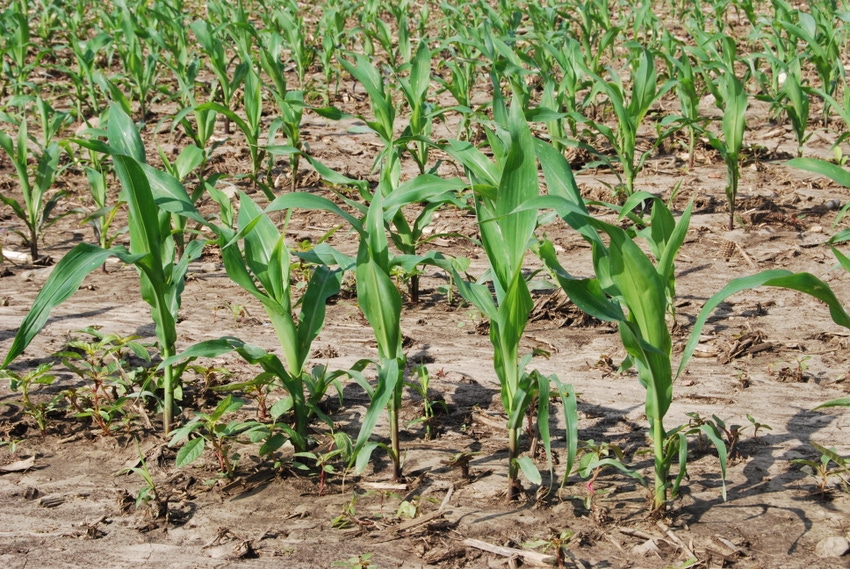June 13, 2017

The 2017 growing season for much of the U.S. did not get off to a great start. Wet planting conditions delayed corn planting in much of the central Corn Belt. A small portion of the 90 million acres that were expected to be planted to corn might have been planted to soybeans due to wet conditions.
However, the hot, dry conditions forecast in early June finally rallied the futures markets. The latest U.S. Drought Monitor now indicates that North Dakota and parts of South Dakota are in a moderate drought. However, such conditions are not widespread, making up less than 6% of the country. To view an updated U.S. map of the drought situation, visit droughtmonitor.unl.edu.
Extended weather forecasts
The National Oceanic and Atmospheric Association’s Climate Prediction Center released their three- to four-week forecast for both temperature and precipitation in early June. These forecasts show some respite for much of the Corn Belt with cooler-than-normal temperatures in the Great Lakes region.
During this same late June time frame, above-average precipitation is forecast for much of the Eastern and Southern Corn Belt. Those areas that had trouble with late planting likely have some shallow-rooted plants and would welcome this precipitation forecast. For an update on temperature and precipitation forecasts, visit the climate prediction center at cpc.ncep.noaa.gov.
NOAA released the latest forecasts for the summer months on May 18, indicating higher-than-average temperatures that could creep into the central Cornbelt by August, with much of the eastern Cornbelt and southern Great Plains seeing above-average heat through the later part of the summer.
Stephen Baxter, NOAA meteorologist and seasonal forecaster, indicates temperatures should be above normal for much of the country later in the summer, but it will still be milder than the 2016 growing season. NOAA will release its monthly updated forecasts for July, August and September on June 15.
New-crop corn futures
The hot, dry forecasts for the northwest Corn Belt helped trigger short-covering by the commodity funds the week of June 5. December new-crop corn futures rallied nearly 20 cents per bushel over three days. This contract moved to levels not seen since early July 2016. Farmers with sell orders in place were able to get additional new crop bushels priced more than $4 per bushel. This level exceeds the 62% level of the Fibonacci retracement from the June 2016 high to the August 2016 low.
To view the latest December 2017 Corn Futures Chart, visit cmegroup.com. The chart also contains a 40-day moving average, a good indicator of the direction of price movement.
New-crop soybean futures
Soybean futures rallied along with corn futures in early June. However, large South American production followed by record U.S. planted acres of soybeans led to a selloff of more than $1.20 per bushel since the $10.43-per-bushel high last November. Don’t expect soybean futures prices to trade back above the 50% level of the Fibonacci retracement or $9.80 per bushel without a return to widespread dry hot conditions in late summer. To view the latest November 2017 Soybean Futures Chart, visit cmegroup.com.
Manage your price risk
The hot and dry weather forecasts in early June helped fuel short-covering by the commodity funds. Farmers should use this increased volatility to price more new-crop corn.
Remember, the 2017 crop insurance projected price is $3.96 per bushel. Thus, farmers with revenue protection crop insurance should have a high comfort level to preharvest-market a portion of their insured corn bushels when December corn futures prices exceed this level. However, the crop insurance projected price for soybeans is $10.19 per bushel. It will likely prove challenging to sell additional soybean bushels above this level without widespread weather problems in late summer.
Johnson is an Iowa State University Extension farm management specialist. Contact him at [email protected]. The charts referred to in this article are available in Johnson’s Crop Marketing Strategies newsletter for June.
About the Author(s)
You May Also Like






